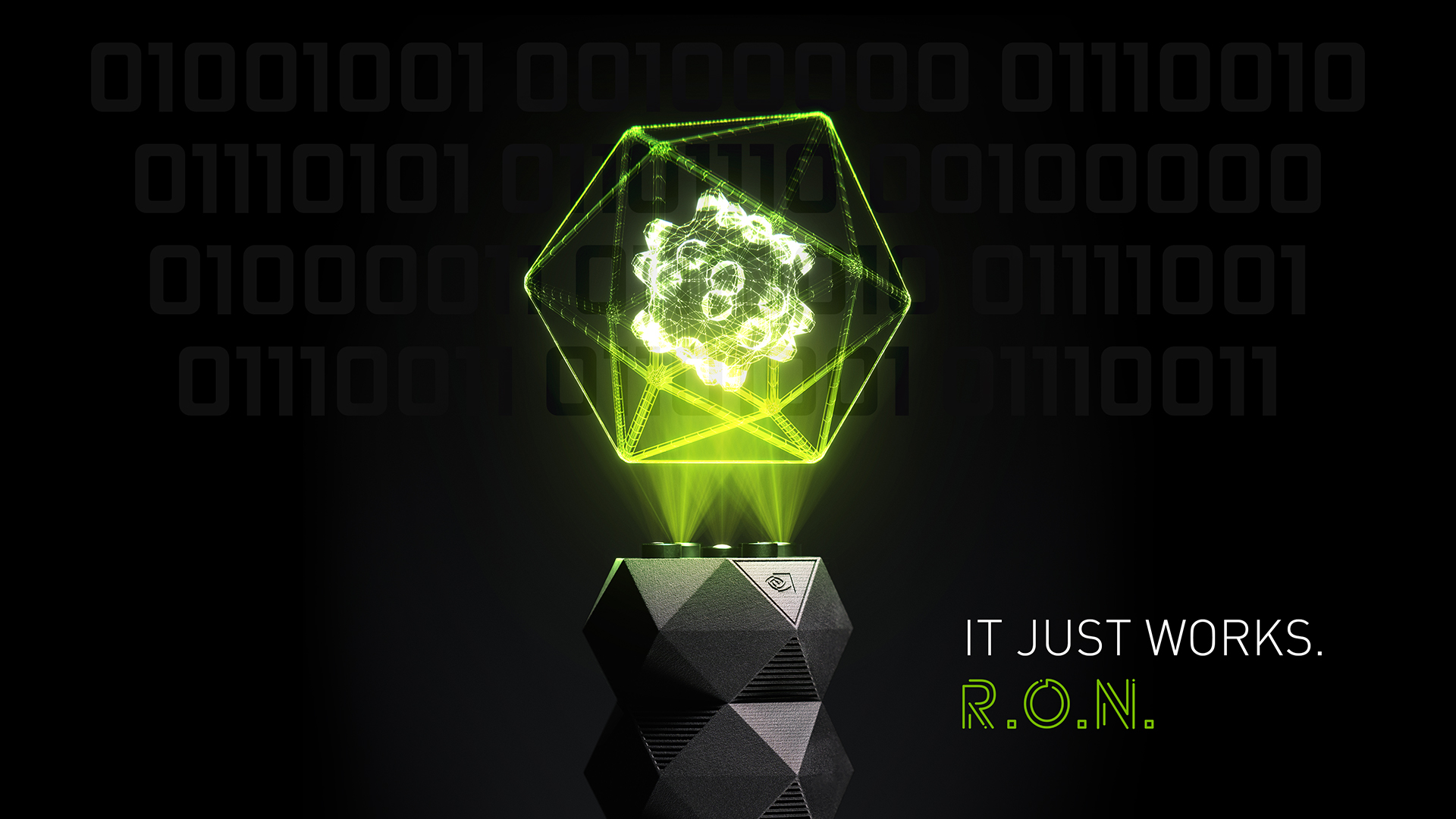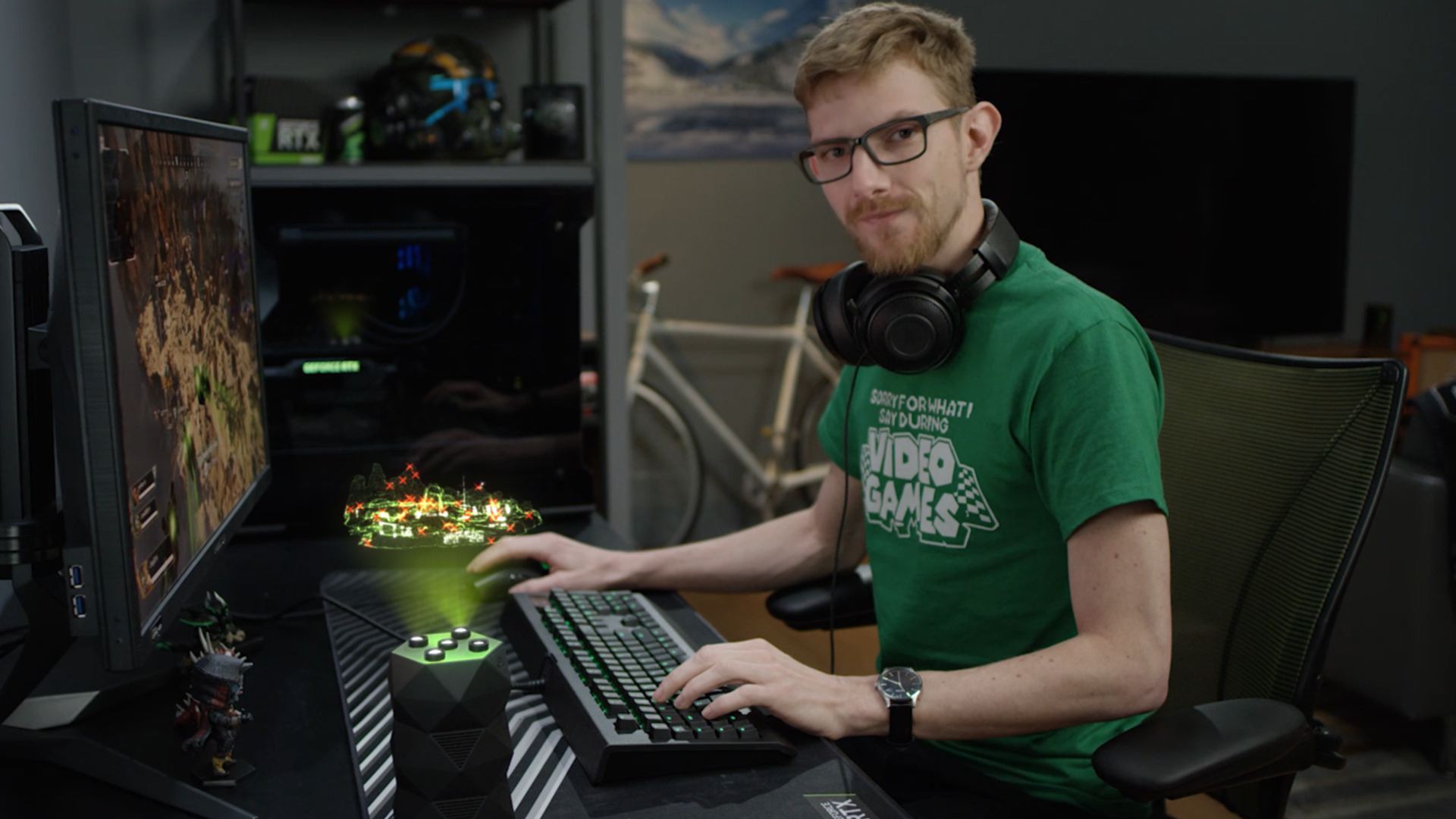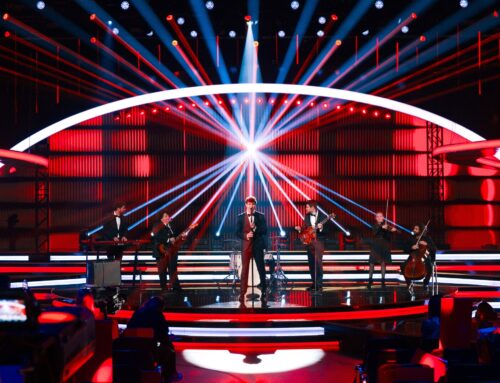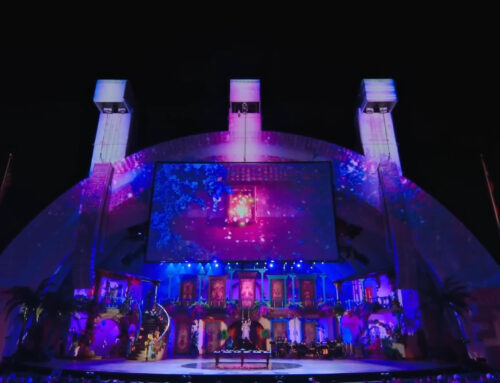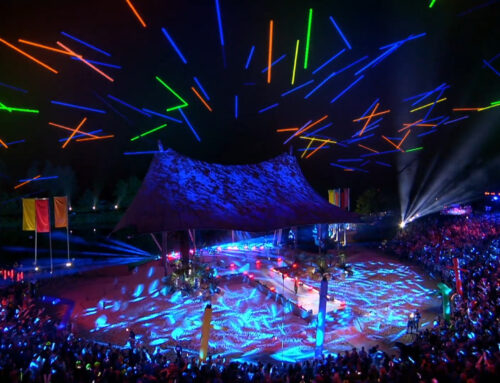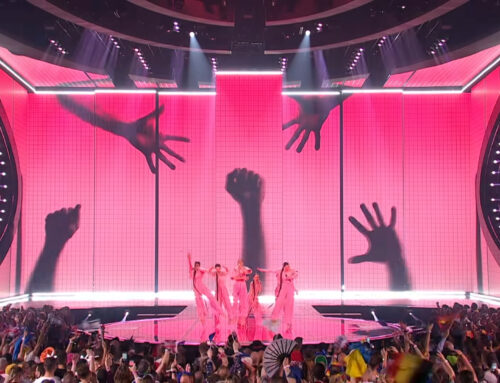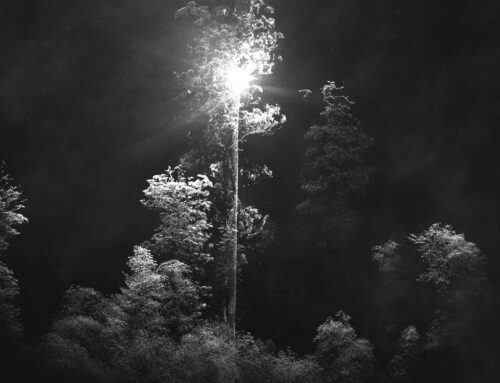Project Description
NVIDIA: R.O.N.
“Notch’s render speed provides far more than just the obvious practical time-saving benefit — it has a profound psychological impact.”
This year, on the 1st of April, NVIDIA released the very first AI-powered holographic assistant for PC gaming – R.O.N. the new face of gaming. Too good to be true? Perhaps the release date will give you a clue!
NVIDIA’s Senior Creative 3D Artist Cruz deWilde tells us how he brought R.O.N. to life using Notch. Cruz’s background in science and technology has made him an expert in transforming data into visual information. Cruz turns abstract ideas into animations that inspire the imaginations of NVIDIA staff and users.
“We wanted to create a convincing hoax product release with enough of an authentic feel that customers might think twice before dismissing the video as a joke.” The NVIDIA team brainstormed an AI assistant that did much more than tell you the weather, because why would a gamer be interested in the weather? NVIDIA imagined gaming assistant R.O.N., an assistant that could battle online trolls, distract family members and even show you elements of gameplay via hologram.
“We talked a bit about what the hologram should look like, and decided on a cross between the simplicity of the geometry in the original TRON, with the “projected” look found in the film Ridley Scott film Prometheus.”

After the live footage was shot, Cruz had the challenge of creating a convincing hologram. “Notch has in-built nodes which make a holographic effect possible with a simple workflow.” To create the look, Cruz imported geometry created in Maya and Cinema 4D “Notch automatically transforms a Cinema 4D file into a node with all the relevant contents exposed in the Notch node graph — works like magic! From here I could easily parent my Notch camera to the C4D camera and my R.O.N. node tree to the C4D position markers.”
Volumetric lighting and light-scattered video projection from spotlights create the projection effect of the hologram. Cruz rendered the hologram animations as NotchLC movie files and imported the associated clips into the live-action scene. Math Modifier, Expression, Delay, and Range Remap nodes were key to driving almost every aspect of the hologram animations. “Through creating chains of various Modifier nodes, I was able to create simplified controls for cascades of complex effects.”
Rendering out the projection movie files in Notch took just a few seconds on a single graphics card. The look was finished using post-FX nodes such as Film Grading, Color LUT, Glow, VHS Scanlines, and Digital Chroma Glitch.

Audio-driven geometry deformers were instrumental in creating a dynamic and vocal character from otherwise static geometry. The voice tracks for R.O.N. were in flux up until the final day of delivery; every audio change required a complete re-render of the associated VFX shot elements: “This is where Notch’s near-instantaneous render speed was absolutely invaluable — I honestly can’t think of any other platform that would have been a viable alternative.”
“I was able to make adjustments to the look and behaviour of the hologram with my director standing next to me as it played in real time. I hadn’t imagined working that way before. I’ve found that Notch’s render speed provides far more than just the obvious practical time-saving benefit — it has a profound psychological impact. My willingness to experiment depends on how quickly and cheaply I can cycle through failures before arriving at a successful solution. Notch has expanded my horizon of what before seemed too daunting to try.”
On April Fools Day hundreds of thousands of viewers across the world were introduced to R.O.N. The video has over 2.5 million views worldwide and is the 2nd most popular video on GeForce’s YouTube. “What we’ve learnt from the hugely positive response is that our users want us to make R.O.N. for real!”
